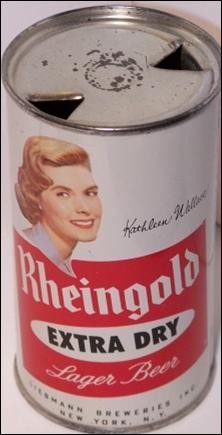G&M Distributors
Metal Can Opener
Today, people know that opening a can of beer or pop requires simply lifting up the tab that pierces the scored hole on the top of the can. However, until the early 1960's, all beverage cans had to be opened with a thin, flat, metal can opener. The opener was hooked to the rim of the can and then lifted up to pierce through the flat metal top of the can. This triangular shaped hole was also made on the other side of the lid to allow air to flow in and make the liquid flow out with ease.
Most people 55 and older remember these type lids but do you know the slang term that was universally used for these old can openers. The term for them was a "church key." Church keys were used as a way for brewers to advertise their beer brands, and thousands still exist in the drawers of many homes across the U.S. Open the kitchen drawer or tool box at your Parent's or Grandparent's home and you will probably find an old church key from some long gone beer lying amongst the utensils or tools. So many are around because they were given away by the thousands by liquor stores and bars.
Many people ask where the term church key came from and several stories are out there. One is that it was just a sarcastic name as it was obviously not used to access a church but instead a can containing alcoholic beverages. A better version is that in Medieval Europe, most brewers were monks and the monks held the keys to the beer cellars in the monasteries. These keys may have resembled the can opener and thus the term church key. Another version is that the very first beer cans were test marketed in 1933, the same year that the Cullen-Harrison amended the Volstead Act and ended Prohibition. The can opener invented for this can
When you subscribe to the blog, we will send you an e-mail when there are new updates on the site so you wouldn't miss them.



